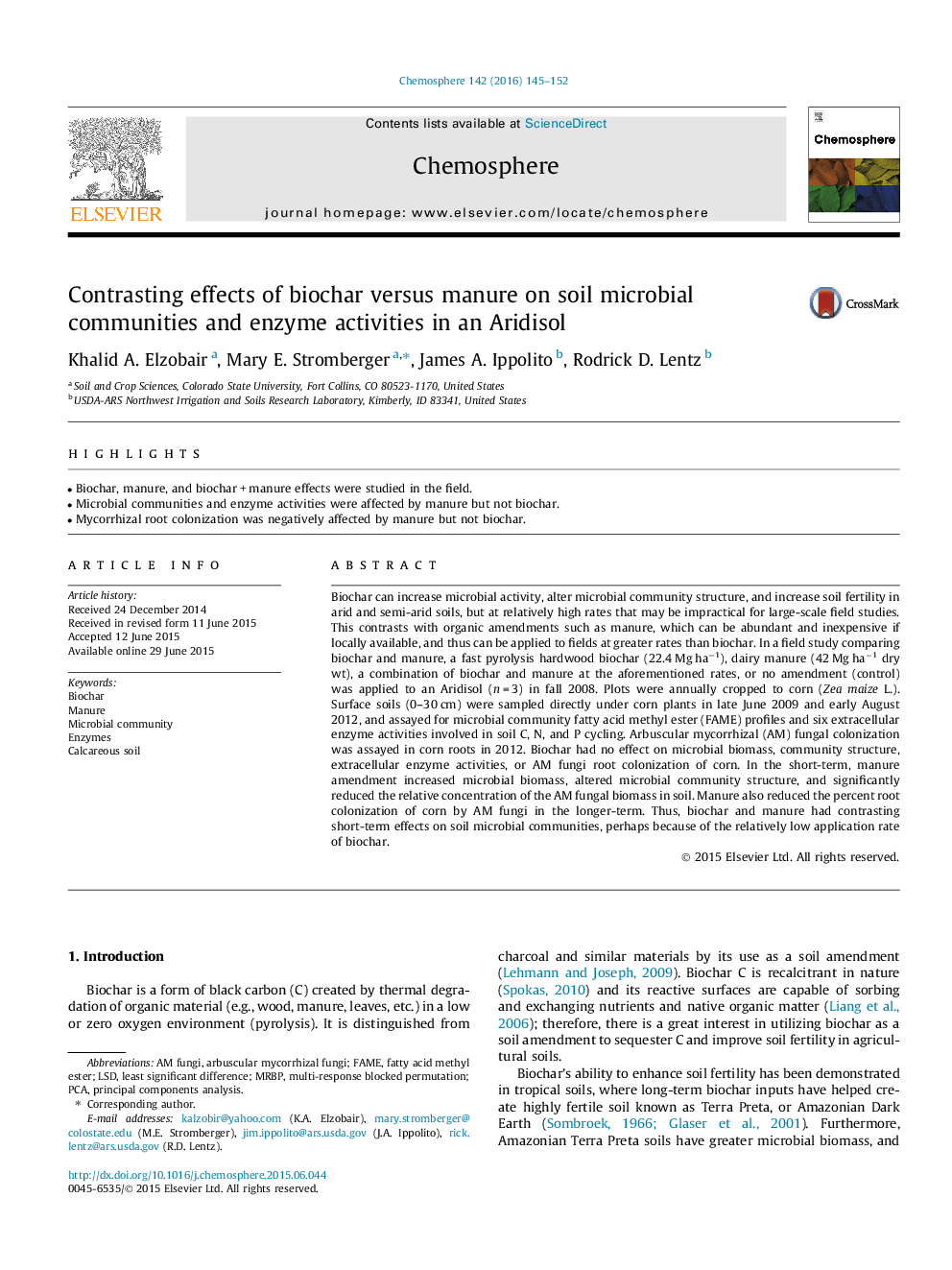| Article ID | Journal | Published Year | Pages | File Type |
|---|---|---|---|---|
| 4408084 | Chemosphere | 2016 | 8 Pages |
•Biochar, manure, and biochar + manure effects were studied in the field.•Microbial communities and enzyme activities were affected by manure but not biochar.•Mycorrhizal root colonization was negatively affected by manure but not biochar.
Biochar can increase microbial activity, alter microbial community structure, and increase soil fertility in arid and semi-arid soils, but at relatively high rates that may be impractical for large-scale field studies. This contrasts with organic amendments such as manure, which can be abundant and inexpensive if locally available, and thus can be applied to fields at greater rates than biochar. In a field study comparing biochar and manure, a fast pyrolysis hardwood biochar (22.4 Mg ha−1), dairy manure (42 Mg ha−1 dry wt), a combination of biochar and manure at the aforementioned rates, or no amendment (control) was applied to an Aridisol (n = 3) in fall 2008. Plots were annually cropped to corn (Zea maize L.). Surface soils (0–30 cm) were sampled directly under corn plants in late June 2009 and early August 2012, and assayed for microbial community fatty acid methyl ester (FAME) profiles and six extracellular enzyme activities involved in soil C, N, and P cycling. Arbuscular mycorrhizal (AM) fungal colonization was assayed in corn roots in 2012. Biochar had no effect on microbial biomass, community structure, extracellular enzyme activities, or AM fungi root colonization of corn. In the short-term, manure amendment increased microbial biomass, altered microbial community structure, and significantly reduced the relative concentration of the AM fungal biomass in soil. Manure also reduced the percent root colonization of corn by AM fungi in the longer-term. Thus, biochar and manure had contrasting short-term effects on soil microbial communities, perhaps because of the relatively low application rate of biochar.
